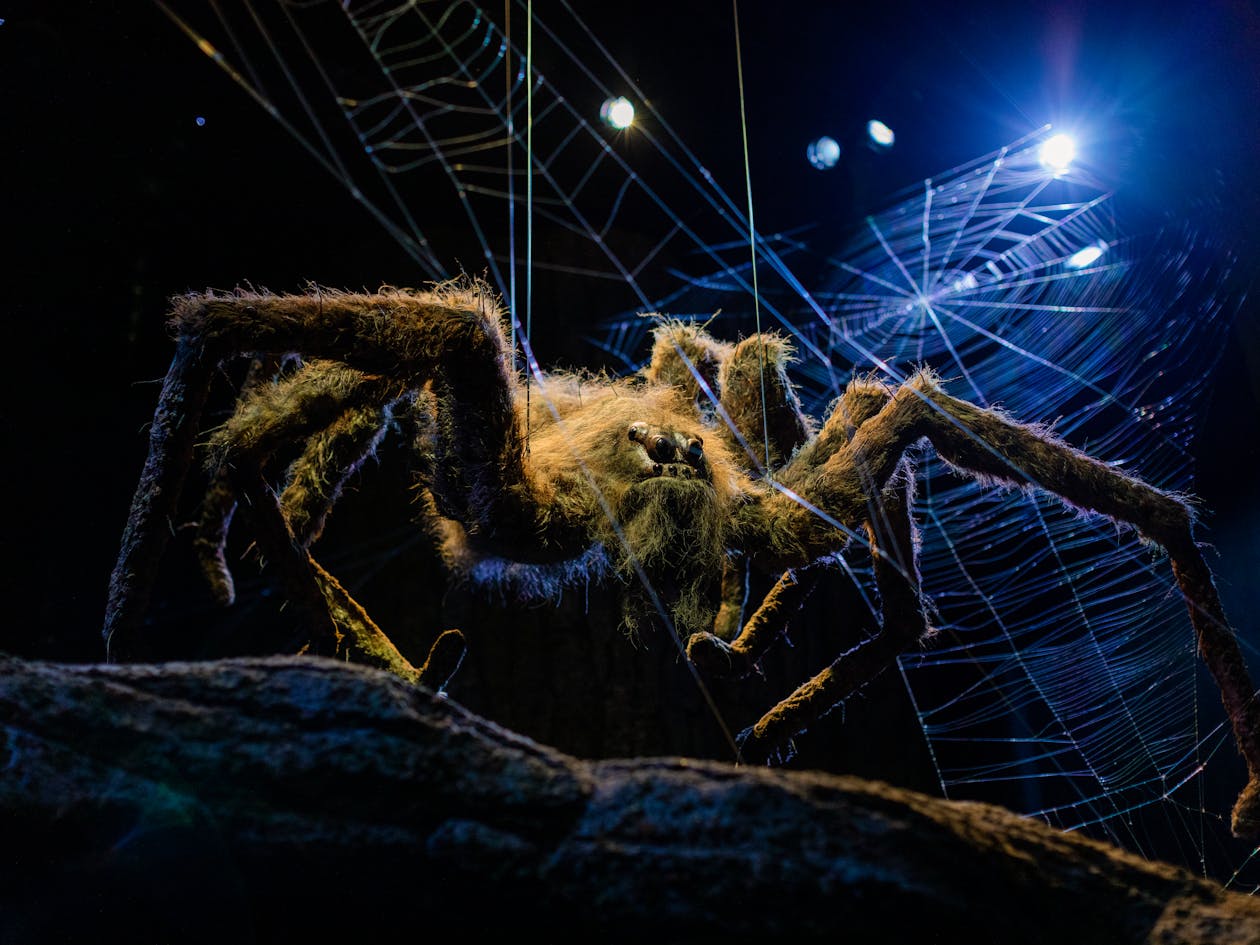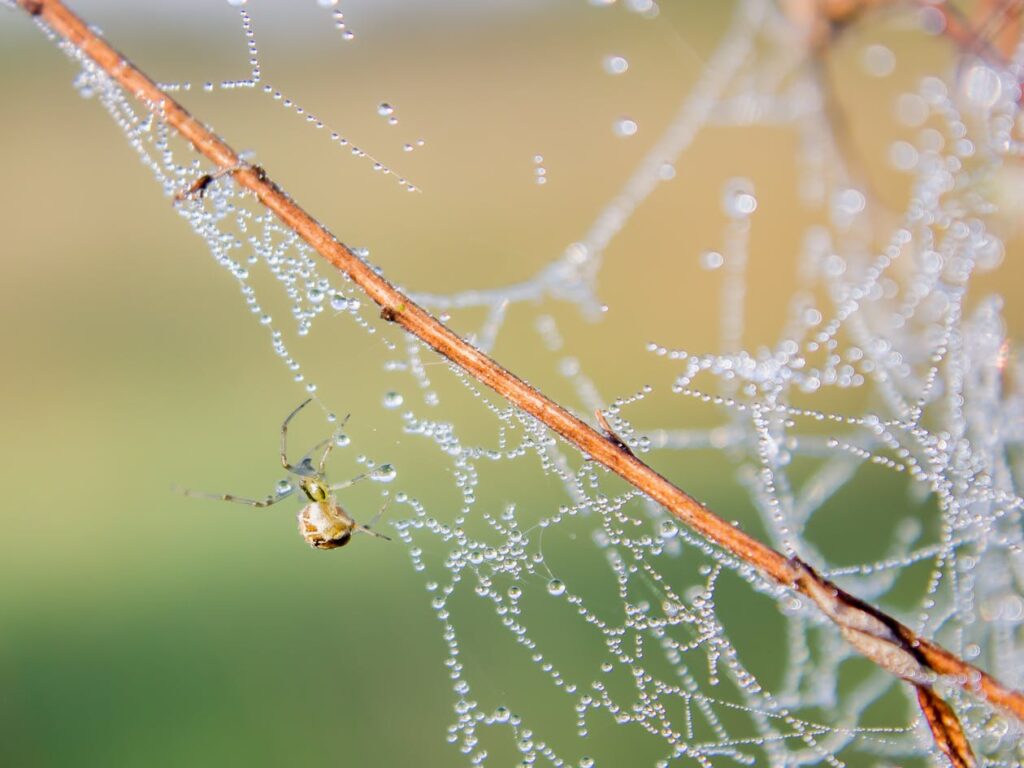World’s First CRISPR-Edited Spider Produces Glowing Red Silk From Its Spinneret

Picture walking into your basement and seeing something extraordinary. A spider sits in its web, but something feels different. Under certain light, its silk threads shimmer with an otherworldly red glow. You might think you’ve stumbled into a fantasy novel, but you’ve witnessed the future of science.
Scientists have achieved a remarkable feat, creating the world’s first genetically modified spider that produces glowing silk. But before you start worrying about radioactive arachnids taking over your home, let’s explore how this breakthrough occurred and why it matters far beyond the laboratory walls.
Every scientific revolution begins with someone asking, “What if?” What if we could redesign nature’s most impressive materials? What if spiders could become living factories for custom-designed fibers? What if the answer to sustainable manufacturing was already spinning webs in our gardens?
Why Scientists Chose Eight-Legged Test Subjects
CRISPR-Cas9 technology has been reshaping biology for years, earning its inventors the Nobel Prize for revolutionizing the way we edit the genetic code. Scientists have used this molecular scissors to create red-eyed wasps and malaria-resistant mosquitoes. Now, researchers have turned their attention to one of nature’s most misunderstood creatures.
Working with spiders requires extraordinary patience and creativity. Each one must live alone because of their cannibalistic tendencies—cage neighbors would quickly become dinner. As researchers noted in their study, “their cannibalistic nature means that they have to be reared individually, otherwise their cage neighbors would be gobbled up.” Add their complex genome structure, diverse species variations, and you have a recipe for research headaches that would frustrate most scientists.
Spider genomes contain duplications that complicate genetic analysis. Unlike fruit flies or mice, spiders don’t come with decades of established research protocols. Every experiment requires starting from scratch, developing new techniques for creatures that evolved completely different survival strategies.
Despite these obstacles, one species broke through: Parasteatoda tepidariorum, the common house spider you might find in your bathroom corner. Scientists spent years developing this humble arachnid into a research superstar, creating specialized housing systems and breeding protocols that enabled genetic modification experiments.
Breaking Down Nature’s Strongest Material

Spider silk isn’t just another biological material—it’s an engineering marvel that puts our best synthetic materials to shame. Imagine a cable five times stronger than steel but also lightweight, elastic, biodegradable, and tear-resistant. Engineers have long dreamed of manufacturing such a material, spending billions in the process of trying to replicate what spiders create effortlessly.
Every web you brush away represents millions of years of evolutionary perfection. Spiders produce up to seven different types of silk, each with specific mechanical properties tailored for other purposes. Capture spirals use sticky silk to trap prey, while draglines provide safety lines during dangerous descents.
Major ampullate silk serves as their lifeline and web framework, combining tensile strength with remarkable elasticity. When a spider falls, this silk stretches without breaking, absorbing impact energy that would snap steel cables of similar thickness.
Kevlar and carbon fibers might impress us with their industrial applications, but spider silk surpasses them in toughness and extensibility. Maximum strength reaches 1.7 GPa—rivaling synthetic high-tech materials while maintaining superior flexibility. Unlike brittle carbon fiber, spider silk can bend and stretch before breaking.
Scientists have tried for decades to mass-produce artificial spider silk using bacteria, yeast, and even goats. While these attempts produced silk proteins, they never matched the mechanical properties of natural spider silk. Something about the spider’s spinning process remained impossible to replicate artificially.
Lab Magic: Creating Glowing Spiders

Creating genetically modified spiders requires precision that would challenge even the most skilled surgeon. Scientists developed an injection solution containing the CRISPR gene-editing system, along with a red fluorescent protein gene sequence. Using microscopic needles thinner than human hair, they injected this solution into unfertilized eggs inside female spiders.
Each injection required perfect timing and positioning. Scientists anesthetized spiders with carbon dioxide to prevent movement, then held them carefully under stereomicroscopes. One wrong move could kill the spider or damage developing eggs.
After mating with males, these treated females produced something extraordinary: offspring with modified genetics. Red fluorescent protein serves as a success marker—if the silk glows under specific light, the experiment is considered successful. Without this visual confirmation, scientists would need extensive DNA testing on every spider offspring.
“We have demonstrated, for the first time worldwide, that CRISPR-Cas9 can be used to incorporate a desired sequence into spider silk proteins, thereby enabling the functionalisation of these silk fibres,” explained Professor Dr. Thomas Scheibel from the University of Bayreuth. His team achieved what many thought impossible, opening doors to custom-designed biological materials.
Setting up successful breeding programs required overcoming multiple hurdles. Scientists had to time injections precisely with spider reproductive cycles, maintain optimal laboratory conditions, and develop new protocols for handling genetically modified arachnids.
Beyond Party Tricks: Real Science Behind Red Silk
Scientists targeted MaSp2, one of the major ampullate silk proteins responsible for the strength and properties of silk. MaSp2 contains a high proline content, which contributes to silk’s elasticity and toughness. Researchers needed to insert modifications without destroying the protein’s natural function.
Each modification required careful molecular planning. Scientists chose insertion points in linker regions that connect protein domains without disrupting silk assembly. These linker sequences remain conserved across spider species but don’t participate directly in fiber formation.
When successful, the modified protein produced silk fibers that glowed red under fluorescent light. Laboratory analysis confirmed the breakthrough through multiple testing methods. DNA sequencing confirmed that the genetic modifications had taken hold, while fluorescence microscopy revealed that red light was emanating from the spiders’ silk glands.
Scientists established stable breeding lines of modified spiders, proving that genetic changes passed to subsequent generations. Young spiderlings showed red fluorescence in their abdomens, indicating successful gene expression before they began spinning silk.
MaSp proteins comprise large central domains of repeated sequence motifs flanked by non-repetitive terminal domains. These terminal regions regulate protein assembly during silk storage and spinning, while central sequences determine mechanical properties. Disrupting either region could eliminate silk production.
Laboratory Challenges That Almost Stopped Everything

Progress came through persistence and countless failed attempts. Researchers faced repeated setbacks before developing their successful protocol. Spiders couldn’t be housed together due to cannibalistic behavior, making large-scale studies impossible. Each spider required individual housing, a specific feeding schedule, and regular monitoring.
Complex genome architecture added another layer of difficulty. Spider genomes contain duplications and variations that complicate genetic analysis. Previous genetic studies relied on RNA interference experiments, which had significant limitations in studying gene function during development.
Each female spider produced 90-100 offspring per egg sac, requiring extensive screening to identify successful modifications. Scientists had to examine hundreds of spiderlings under microscopes, looking for signs of genetic changes. Most offspring showed no modifications, resulting in frustratingly low success rates.
Temperature, humidity, and lighting conditions all affected experimental outcomes. Spiders proved sensitive to laboratory environments, requiring specialized care that added complexity to every experiment. Many spiders died during injection procedures, forcing researchers to perfect their techniques through trial and error.
Funding challenges complicated research efforts. Spider research receives less funding than studies on model organisms, such as mice or fruit flies. Scientists had to justify every expense while developing entirely new research protocols from scratch.
Success Stories from Tiny Test Subjects
Before tackling silk modification, researchers tested their CRISPR protocol on a simpler target: eye development. They knocked out the sine oculis gene, which controls all spider eye formation. Eye loss wouldn’t kill spiders, but would provide explicit visual confirmation of genetic modification success.
Results were dramatic and varied. Some offspring lost all eyes completely, while others showed partial eye loss or developmental abnormalities. Specific individuals retained some eye structures while losing others, creating asymmetrical patterns that revealed how different types of eyes develop.
Only the lens remained unaffected across all modifications, suggesting that different developmental origins underlie the formation of various eye structures. Scientists utilized the spiders’ natural autofluorescence under blue light to enhance visualization of modification effects and document changes.
Scientists confirmed their genetic modifications through DNA analysis and sequencing. Mutation rates stayed below 50%, indicating that early cell division occurred before complete genetic integration. CRISPR modifications happened during fertilization and early development stages.
Only the first egg sacs from injected females contained offspring that were modified. Later, the egg sacs showed normal development, suggesting that the genetic modifications affected only the eggs present during the injection timing. Future research must account for spider reproductive cycles to optimize success rates.
What Glowing Spider Silk Means for Tomorrow
Successful spider silk engineering opens doors to revolutionary applications across multiple industries. Scientists can now design silk fibers with new functionalities, potentially increasing the already impressive tensile strength of natural spider silk. Professor Scheibel noted that CRISPR gene-editing could enhance silk properties beyond current biological limits.
Material science research gains a powerful new tool for creating custom biological materials. “The ability to apply CRISPR gene-editing to spider silk is very promising for materials science research – for example, it could be used to further increase the already high tensile strength of spider silk,” Said Scheibal. Researchers can insert different proteins to create silk with specific properties—imagine fibers that conduct electricity, resist particular chemicals, or change color in response to environmental conditions. Each modification targets specific applications.
Biotechnology manufacturing could transform entire industries through sustainable biological processes. Instead of energy-intensive synthetic manufacturing that relies on petroleum products, we might harvest modified silk from spider farms, creating environmentally friendly alternatives that reduce carbon footprints.
Space exploration applications show particular promise. Spider silk’s strength-to-weight ratio makes it an ideal material for spacecraft components, while its biodegradability eliminates concerns about waste during long missions. Modified silk could be used to carry sensors or medications for monitoring astronaut health.
Defense applications range from bulletproof clothing to parachute cords that withstand extreme conditions. Military researchers have long sought materials that combine strength with flexibility, making modified spider silk a perfect candidate for protective equipment.
From Web to Workshop

Medical applications show enormous promise for treating human health conditions. Spider silk’s biocompatibility and strength make it ideal for surgical sutures that dissolve naturally without causing immune reactions. Modified silk could carry medications directly to target tissues, releasing drugs slowly over time.
Artificial tendons and ligaments made from spider silk could revolutionize orthopedic surgery. Current synthetic materials often trigger inflammatory responses or fail under repeated stress. Spider silk alternatives would integrate naturally with human tissue while providing superior mechanical properties.
Industrial manufacturing is poised for transformation through biological production methods. Imagine cables stronger than steel but produced by living organisms rather than energy-intensive factories. Aerospace industries could build lighter, stronger components using engineered spider silk composites that reduce aircraft weight.
Sustainable materials are becoming an achievable reality as environmental concerns continue to grow worldwide. Spider silk offers renewable alternatives to synthetic fibers that accumulate in landfills. Modified spiders could produce specialized materials on demand, eliminating waste from overproduction.
Textile applications could revolutionize clothing manufacturing. Athletic wear made from spider silk would provide superior moisture management, temperature regulation, and durability. Fashion designers could create garments with properties that change based on weather conditions or wearer preferences.
Scientific Method Meets Spider Biology

Developing the microinjection protocol required countless experiments. Scientists had to determine optimal injection timing, solution concentrations, and handling procedures for pregnant spiders.
DNA analysis confirmed genetic modifications through electrophoresis and Sanger sequencing. Researchers used specialized software to identify specific genetic changes and verify successful CRISPR editing.
Fluorescence microscopy revealed the location and intensity of red protein expression. Scientists could pinpoint exactly where modifications occurred within spider silk glands and confirm protein production.
Small Steps Leading to Giant Leaps
CRISPR technology is revolutionizing spider research, allowing for the creation of genetically modified spiders that are essential for exploring arthropod biology and evolutionary processes. These modifications enable scientists to investigate early developmental stages and determine the specific roles of various genes.
Furthermore, these engineered spiders can produce specialized silk with tailored properties, opening doors to advancements in diverse sectors like materials science, medicine, and manufacturing. By harnessing the unique abilities of these small creatures, researchers are finding solutions to contemporary problems. This approach exemplifies the convergence of biological understanding with technological innovation, demonstrating how insights gained from evolutionary processes can inspire and guide future advancements.
Loading...

